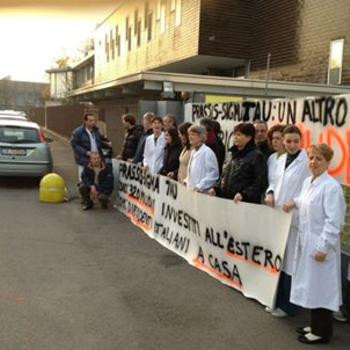How does Sp3 hybridization work for Nitrogen in #NH_2^-# ?
2 Answers
There are formally 4 electron pairs distributed around the nitrogen in the amide molecule;
Explanation:
Of course, there are likewise 4 electron pairs distributed around the nitrogen centre in ammonia,
Likewise for
Sp3 hybridization for Nitrogen in
Explanation:
Nitrogen has 5 outer electrons, in


